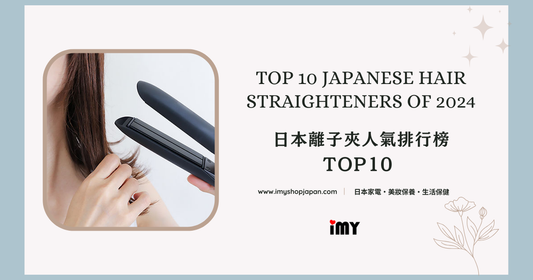When planning to use Japanese appliances in Hong Kong, it's essential to understand the differences in electrical systems to avoid damage or potential hazards. This guide will help you navigate through the necessary steps and precautions.
Table of Contents
1. Voltage and Frequency Differences

Hong Kong Electricity:
• Voltage: 220V
• Frequency: 50Hz
• Plug Types: G (British-style three-pin plug).
Japanese Electricity:
• Voltage: 100V
• Frequency: 50/60Hz
• Plug Types: A (two-pin plug).
2. Steps to Use Japanese Appliances in Hong Kong
(1) Check Appliance Compatibility:
• Dual Voltage Appliances: Some appliances are designed to operate on a range of voltages (e.g., 100V-240V). These appliances can be used directly with a plug adapter.
• Single Voltage Appliances: If your appliance only supports 100V, you will need a voltage converter.
• On iMy Shop Japan's product page, you can find voltage and wattage information in the product description. If you are uncertain, feel free to contact us.
(2) Purchase a Voltage Converter:
• Types of Converters:
• Transformer Type: Suitable for precision equipment (e.g., PCs, smartphones). These converters are bulkier but reliable.
• Electronic Type: Compact and lightweight, ideal for high power consumption devices like hair dryers but not for precision equipment.
• Capacity: Ensure the converter's wattage exceeds the appliance's power consumption to prevent malfunctions.
(3) Use a Plug Adapter:
Convert the Japanese plug (Type A) to the Hong Kong plug (Type G) using a suitable adapter. Adapters do not convert voltage; they only make the plug fit the socket.
(4) USB Chargers:
Many modern electronics (smartphones, tablets) are charged via USB, which typically supports 100V-240V. These do not require a voltage converter, just a plug adapter.
3. Safety Tips
• Check Ratings: Always verify the appliance's voltage and frequency ratings before using it with a converter.
• Secure Connections: Ensure all plugs, adapters, and converters are securely connected to prevent electrical hazards.
• Avoid Overloading: Do not exceed the power rating of the voltage converter to avoid overheating or damage.
• Inspect Equipment: Regularly check your adapters and converters for wear and tear to maintain safety.
Frequently Asked Questions
1. What is the voltage and frequency of electricity in Hong Kong and Japan?
Hong Kong: Voltage is 220V, and frequency is 50Hz.
Japan: Voltage is 100V, and frequency is 50/60Hz.
2. Do I need a voltage converter to use Japanese appliances in Hong Kong?
Yes, if your Japanese appliance only supports 100V, you will need a voltage converter to use it in Hong Kong, which operates on 220V.
3. What type of plug adapter is needed to use Japanese appliances in Hong Kong?
You will need a plug adapter to convert the Japanese plug (Type A) to the Hong Kong plug (Type G).
4. Can USB chargers be used directly in Hong Kong without a voltage converter?
Yes, many USB chargers support a voltage range of 100V-240V and can be used in Hong Kong with just a plug adapter.
5. Where can I find voltage and wattage information for Japanese appliances?
On imy Shop Japan's product page, voltage and wattage information is included in the product description. If you are uncertain, feel free to contact them.




